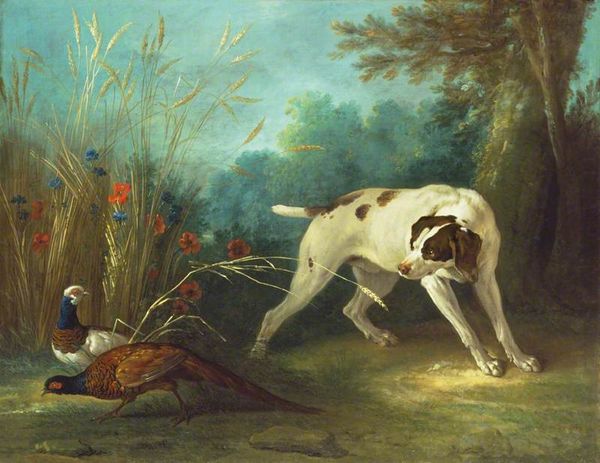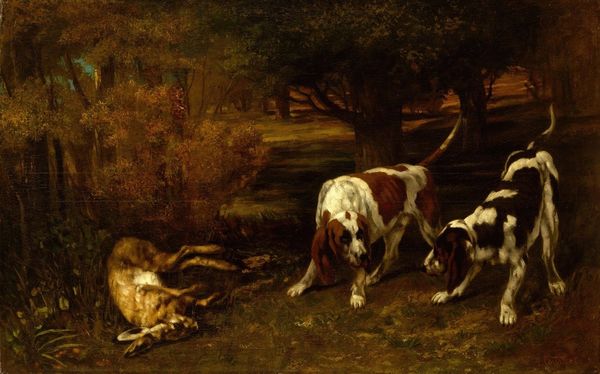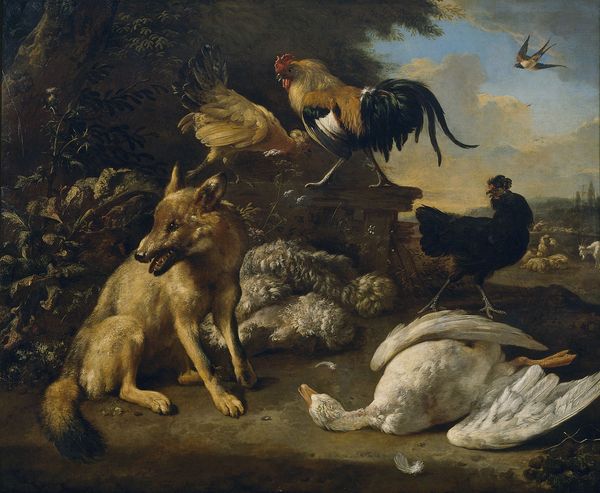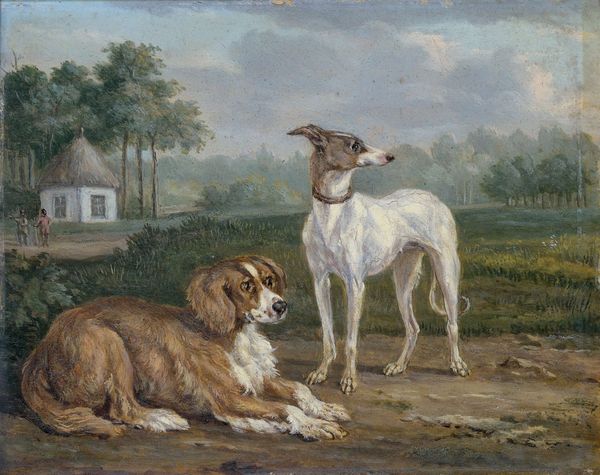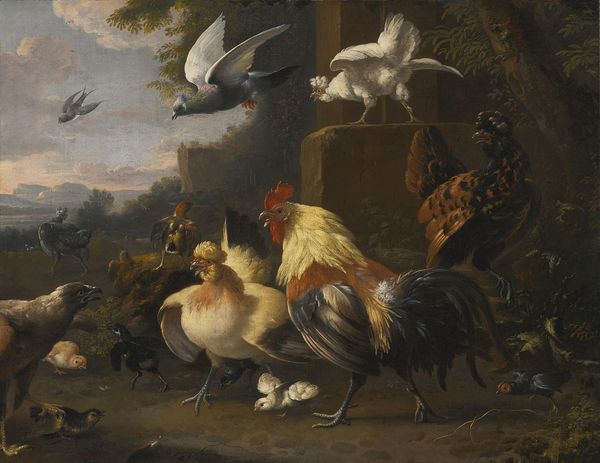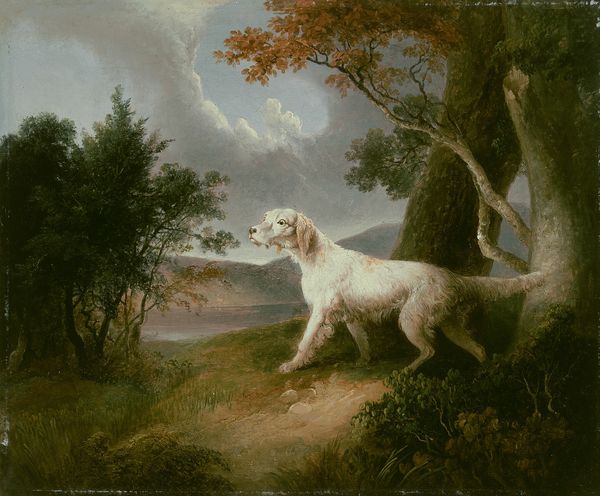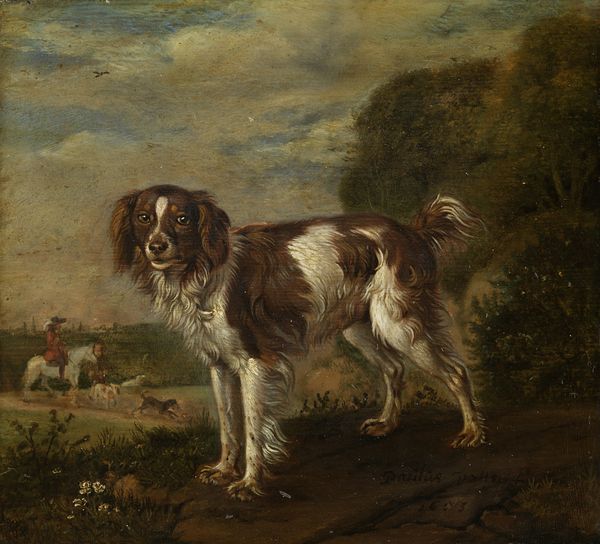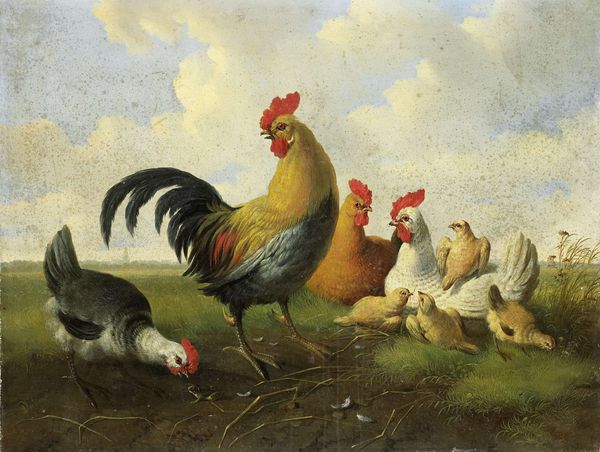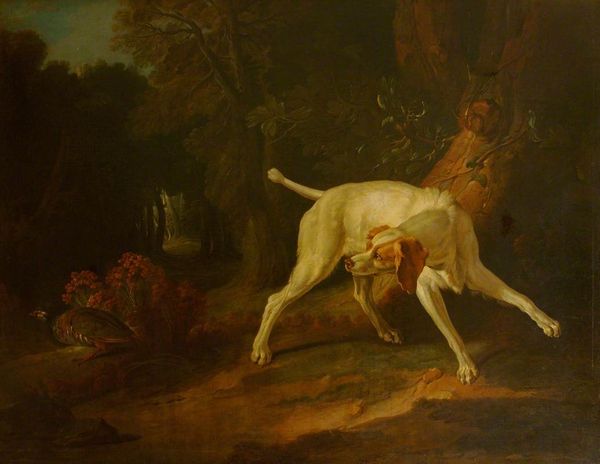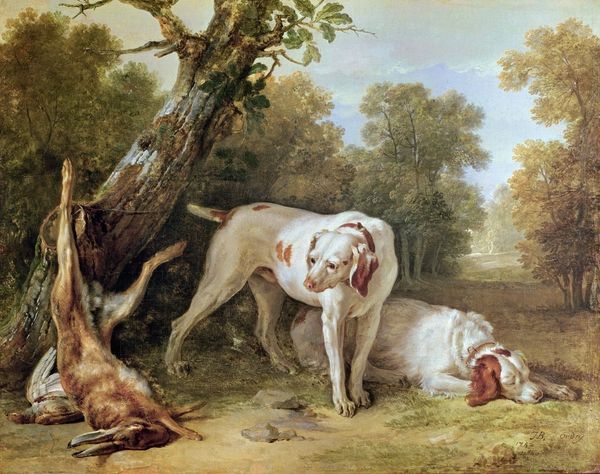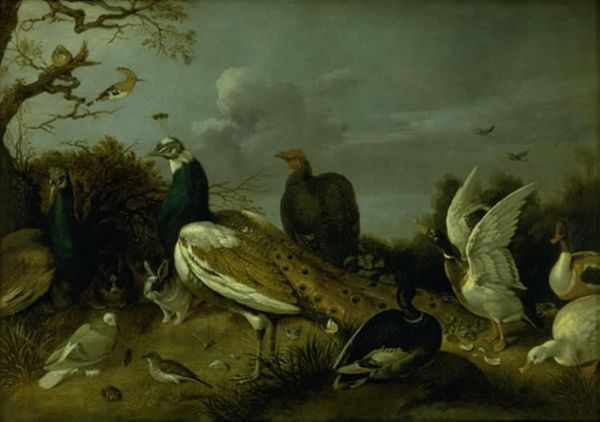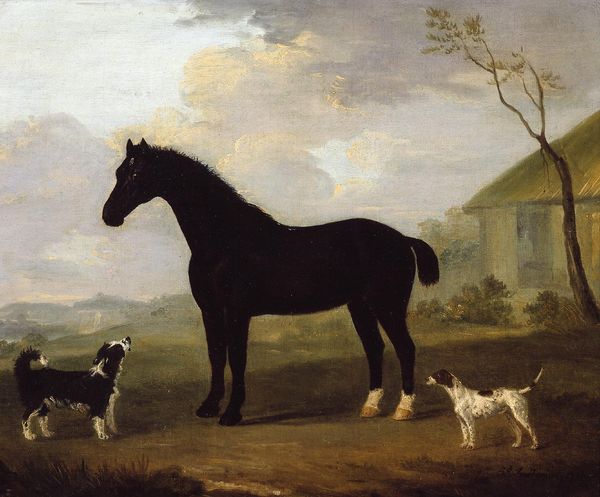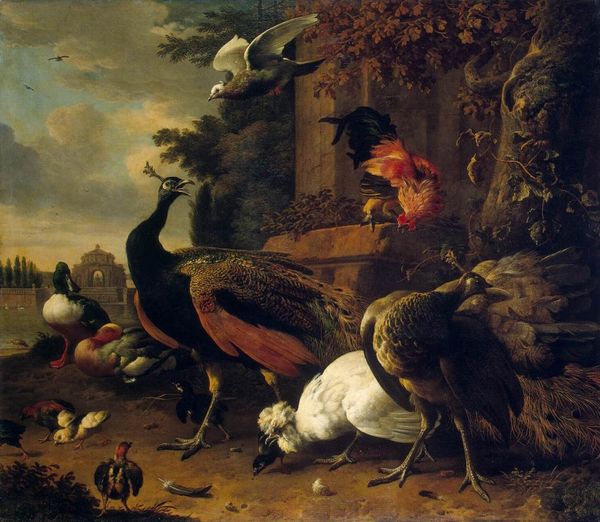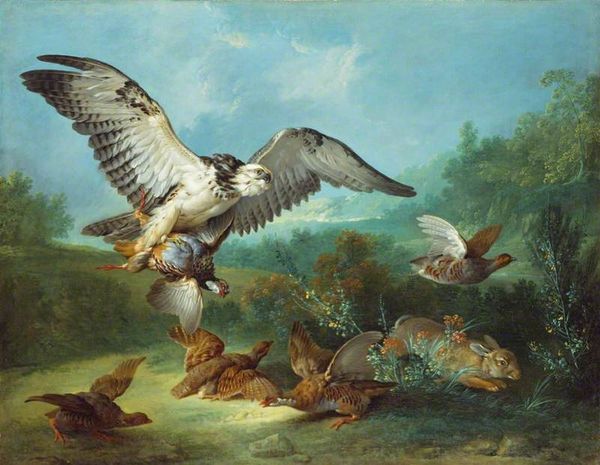
oil-paint
#
baroque
#
oil-paint
#
landscape
#
oil painting
#
genre-painting
#
realism
Copyright: Public domain
Curator: What strikes me immediately is the dog’s incredible tension—every muscle coiled, poised like a spring ready to unleash. There's almost an audible stillness to it. Editor: You’ve zeroed right in. This is Jean-Baptiste Oudry’s "Blanche, Bitch of the Royal Hunting Pack" from 1724. Oudry was a master of animal portraiture and very fashionable within royal circles. It's painted with oils, lending a beautiful luminosity to the scene. Curator: "Bitch" feels rather loaded now as a descriptor! But regardless, I do wonder about this royal hunting pack. What role did it serve, socially, I mean? I always find it revealing. Editor: Hunting was thoroughly entangled with class, status, and the display of power in the 18th century. Louis XV was on the throne, so these paintings reflect the monarchy's passion for the hunt as both sport and a symbolic domain. Animals belonging to the King had elaborate titles and lives of their own at Versailles. Oudry memorialized this hunting scene and its actors for posterity. Curator: It is grand, undeniably. The dog itself seems more like a symbolic rendering of power rather than any actual Blanche who ever graced the hunt. She embodies nobility, don't you think? So pure, so white... maybe too perfect. Editor: Absolutely. The stark whiteness, in contrast with the dark forest and the pheasant's vibrant plumage, draws your eye and serves as a perfect, potent signifier for aristocratic superiority. The painter wants us to understand Blanche's impeccable breeding through his meticulous detail of her musculature and her perfectly maintained, glowing fur. It is less about hunting and more about social status through a portrait. Curator: Indeed, Oudry positions hunting as spectacle and pageantry—a calculated theater performed by both the dog and royal players to maintain their superiority. It makes me consider the pheasant itself! Editor: Right—does the vibrant pheasant stand in as a symbol, as an object of sacrifice? Curator: Exactly! Its colorful presence seems to hint that hunting may also destroy the fragile beauty it encounters—and isn’t that power too? Anyway, interesting food for thought. I appreciate this image, which has definitely grown on me as more complex than it seems on the surface. Editor: Agreed! Seeing an artwork framed within the wider culture allows its impact to be much more deeply understood.
Comments
No comments
Be the first to comment and join the conversation on the ultimate creative platform.
